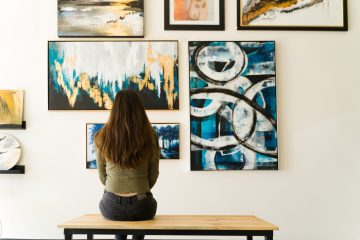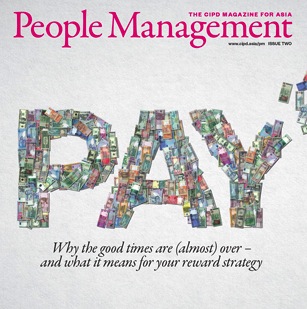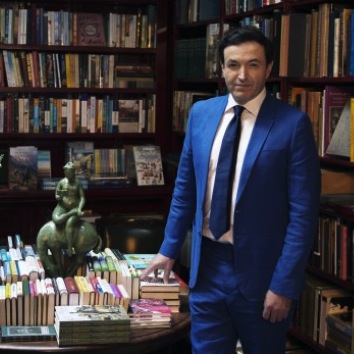
Research has shown that looking at art that we consider beautiful triggers the same pleasurable response we get when we fall in love
There may still be a gloomy post-pandemic cloud hanging over Hong Kong, but when it comes to art, the city is singing.
Hong Kong has emerged as the third-largest art market in the world, trailing only New York and London. You do not need the deep pockets required to buy art or the wall space to display it to reap the benefits. The catalyst for Hong Kong’s flourishing art scene may have been the auction houses, but the impact ripples through the city. A wave of new and revamped art museums and galleries now beckons, inviting seasoned connoisseurs and curious passers-by. As Art Week approaches at month’s end, it is the perfect occasion to immerse yourself in a smorgasbord of artistic creation.
Why invest time in gazing at canvases, sculptures, and installations? The answer lies in the profound effects art has on our well-being.
1. Stress reduction and anxiety relief
Stepping into an art gallery is not just an aesthetic experience; it is a therapeutic one. Studies show that viewing art can lower stress levels and alleviate anxiety. The act of immersing ourselves in colours, shapes and textures provides a mental escape, allowing worries to dissipate like brushstrokes on canvas.
2. The dopamine boost
When you stand before a captivating artwork, your brain chemistry shifts. The release of dopamine – the “feel good” neurotransmitter – surges. It is akin to falling in love, except this romance blooms within the confines of a gallery. Art triggers pleasure centres, leaving us with a sense of elation and connection.
3. Enhanced critical thinking
Art invites contemplation. As you decipher symbolism, analyse composition, and ponder the artist’s intent, your critical thinking skills sharpen. The canvas becomes a puzzle, and you are the detective piecing together clues. This mental exercise extends beyond the gallery walls, to enrich your problem-solving abilities in everyday life.
4. Loneliness dissipates
Art galleries are communal spaces. Whether you are silently admiring a Renaissance masterpiece or engaging in lively discussions about contemporary art, you are part of a shared experience.Suddenly, you are not alone; you are surrounded by centuries of creativity and fellow art enthusiasts.
How to appreciate art
Art Basel (March 28-30, Hong Kong Exhibition Centre) and Art Central (March 28-31, Central Harbourfront) are the highlights of Art Week. Kit Shum, an expressive arts therapist, recommends that people go with family or friends – and take the opportunity to slow down.“Hong Kong people seem to always rush, and especially after the pandemic and with the poor economic situation, many people are stressed. Art helps people to be more relaxed and enjoy the present moment. Going with others helps to improve relationships,” says Shum.
Art Basel is vast. Hong Kong-based artist Joseph Leung Mong-sum suggests that you do not try to look at every artwork, but rather select the ones that you feel drawn towards and spend at least 30 seconds standing in front of each.
“How often do you look at something for more than 30 seconds? Really just try to be with the piece of art,” he says.
Viewing art need not be complicated. Leung’s three-step process for looking at art begins by standing in front of it – for at least 30 seconds – looking at it non-judgmentally and noticing how it makes you feel.
Do you feel content? Agitated? Angry? Happy? Make sure to recognise the negative as well as positive emotions. There are no right or wrong ways to feel – all feelings are valid. The second step is to reflect on why you feel that way.
“People often stand in front of a painting and say, ‘That’s beautiful’. End of story. It is important to go through the process of cognitive reflection. If you feel disgusted, consider why you feel disgusted,” says Leung.
And finally, if you are viewing art with others, share your feelings. The more varied the feelings, the more interesting they are. Talk about the differences.“Once you get used to that process of being mindful of the aesthetic experience, so you become more mindful in daily life. You become more mindful of your emotions,” says Leung.
This approach makes art accessible to everyone. Of course, if you are keenly interested in the art, you can learn more about the artist, their style and the context within which they work, but the starting point is simply noticing how it makes you feel.
“It is important for us not to judge. Let a piece of art do its thing, perform its magic on us. Maybe something magical will happen, maybe it won’t. Often times we haven’t let the magic happen,” says Leung.
This mindful approach to viewing art means slowing down, resisting the urge to snap a photo to post on social media and hurrying on.
Shum suggests getting curious about our own responses to art, bearing in mind that everyone’s interpretation will be different based on their personality and experience. For Shum, the colour red is is associated with love, but for others it might be associated with violence or aggression.
“When we take time to reflect on how a piece of art makes us feel, we get to know ourselves better,” says Shum.
Viewing art may look like a passive activity, but it really gives our brain a workout. Our brains are wired to pick out patterns and extract meaning from what we see. So, when you are look at a painting the neurons are firing away, actively translating what you see into familiar forms.“The prefrontal cortex, which deals with executive functioning of the brain, coordinates the meanings and symbols in a picture. This goes beyond the normal cognitive level and helps the brain develop more,” says Shum.
Research has shown that looking at art that we consider beautiful triggers the same pleasurable response we get when we fall in love. That is the dopamine working.Visiting art museums such as Hong Kong’s global museum of visual culture M+ has also been shown to decrease systolic blood pressure. Just the act of breaking your usual routine and setting aside a couple of hours to go somewhere different and look at things you do not usually see can be refreshing.
And then there is the environment of the art museum or gallery where you are encouraged to be calm and quiet and move slowly through the space.
Dr Saundra Dalton-Smith, an American doctor, researcher and the author of the book Sacred Rest: Recover Your Life, Renew Your Energy, Restore Your Sanity, identifies seven types of rest that people need.
Alongside physical, emotional, spiritual, mental, social and sensory rest (a break from screens), she describes “creative rest” as reawakening the awe and wonder inside of us. Viewing art is one way of getting creative rest.
“You can’t spend 40 hours a week staring at blank or jumbled surroundings and expect to feel passionate about anything, much less come up with innovative ideas,” she writes.
Tickets to Art Basel start at HK$225 (US$29) and Art Central at HK$210 (in advance) – a fraction of the cost of a one-hour therapy session.
The Hong Kong Museum of Art is free to enter, entry to M+ will set you back HK$120, and the Hong Kong Palace Museum’s entry fee is HK$60. Then there are all the art galleries across the city that are free to enter.
Original Link: SCMP







